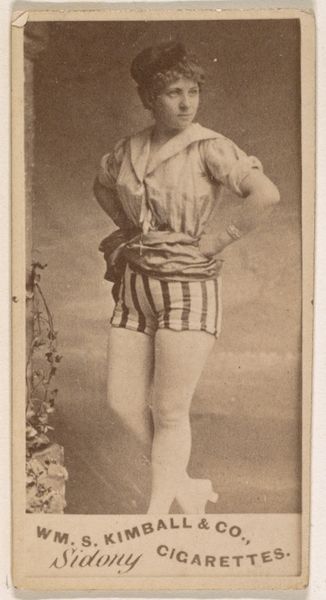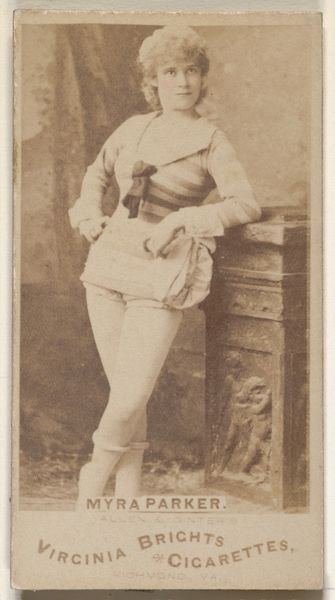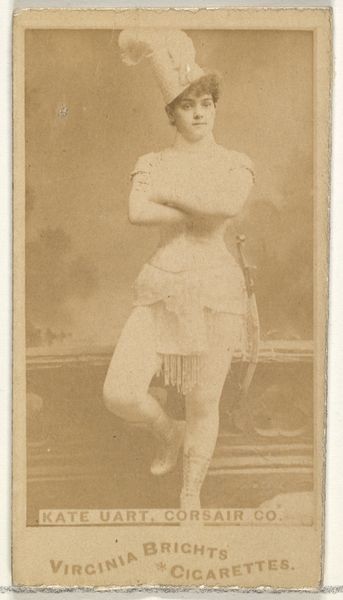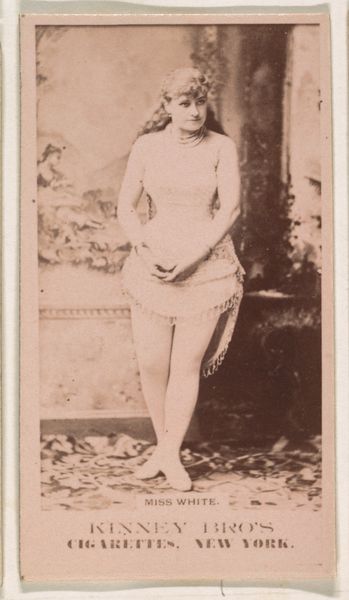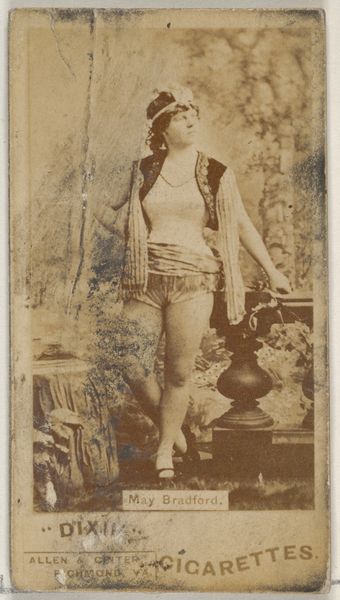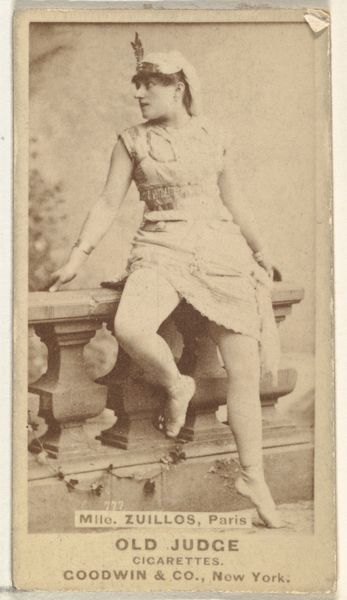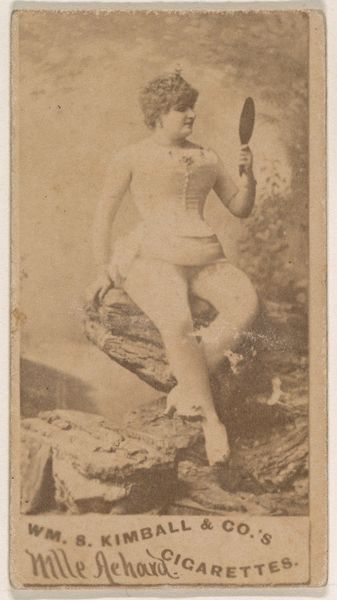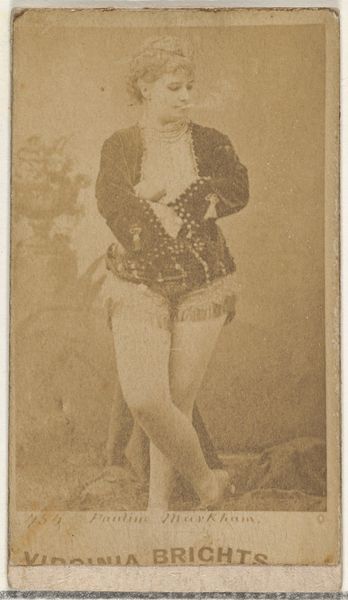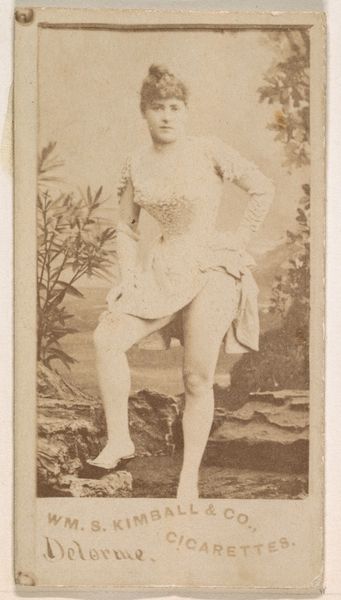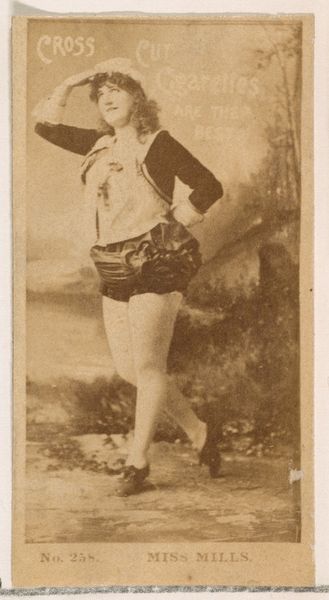
Cora Bradford, from the Actors and Actresses series (N45, Type 7) for Dixie Cigarettes 1885 - 1891
0:00
0:00
Dimensions: Sheet: 2 5/8 x 1 1/2 in. (6.6 x 3.8 cm)
Copyright: Public Domain
Curator: What strikes me immediately about this albumen print, dating from 1885 to 1891, is its curious tonality; a kind of aged sepia that evokes both the Victorian era and a palpable sense of staged artifice. Editor: Well, that’s a fair starting point, I suppose, but I see something far more intriguing than "staged artifice" in this rather suggestive card. This image is from Allen & Ginter’s “Actors and Actresses” series for Dixie Cigarettes, depicting Cora Bradford, presumably an actress of the time, in what could politely be termed a costume. Let's look at this in its historical context: commodification, representation, and the male gaze. Curator: Yes, context is vital, but before we plunge into socio-political analysis, shouldn’t we first consider the composition? Her contrapposto pose creates an interesting asymmetry, echoed in the drapery and the urn, all within the constricting format of a trade card. The delicate rendering of the fabric, almost sheer in places, catches the light… Editor: Which serves, precisely, to emphasize her near-nudity within a society obsessed with female decorum! This wasn’t merely about capturing light. The “Actors and Actresses” series played on the rising celebrity culture to sell cigarettes, but more importantly, it reinforced certain expectations of women's performance, both on and off the stage. Curator: I see your point, that the commodification of beauty for profit speaks volumes about gender roles, and yes, her body is definitely the focus. However, I'd argue that her direct gaze confronts the viewer, almost daring us to objectify her. It's a power dynamic worth noting in itself. Also, aesthetically, there is some correspondence between her frilly cuffs and shorts, echoed in the floriated urn to the right. This feels more staged than salacious. Editor: The gaze, you say? I see instead a staged presentation intended to titillate, wrapped in a facade of “respectability.” It's precisely that tension, that interplay between presentation and reality, which reflects how women performers were marketed at the time. Ultimately, the purpose of these cigarette cards was to drive sales by exploiting anxieties and fantasies circulating at the turn of the century. Curator: Perhaps, but one shouldn't neglect the careful arrangement of line, tone, and texture to achieve a harmonious visual whole, independent of any sociological message it might convey. In conclusion, perhaps we agree that despite any objectification involved, Allen and Ginter produced an unforgettable image here. Editor: Agreed! A compelling artefact of the era—one that deserves closer study not just for its composition but as a symbol of prevailing social forces and cultural obsessions surrounding women and the stage.
Comments
No comments
Be the first to comment and join the conversation on the ultimate creative platform.
